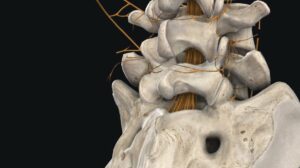NEW YORK (Reuters Health) – Paracervical block is effective in decreasing pain associated with first-trimester surgical abortion, suggest results of a randomized controlled trial conducted in Portland, Oregon.
In the May issue of Obstetrics & Gynecology, available online now, the study team notes that most first-trimester surgical abortions are performed with a paracervical block. But the injections are painful and until now there has been a lack of evidence supporting their use.
With this new trial, “We now have good data to support the efficacy of a paracervical block technique as described in the article,” Dr. Regina-Maria Renner, of the Department of Obstetrics and Gynecology, Oregon Health & Science University told Reuters Health by email.
That technique used more needle sticks (four rather than two), more local anesthetic (20 mL rather than 10 mL), and a longer wait time (3 minutes compared with no wait) than the technique used by most clinicians, the researchers note.
They say they purposefully chose this rigorous paracervical block technique “to ensure that our study would have the greatest chance of demonstrating an effect.” As a result however the results “should not be considered generalizable to other paracervical block techniques. In fact, our technique likely resulted in the observed difference from studies that have not demonstrated a positive effect,” the researchers say.
They enrolled in their study 120 women having surgical abortion. Half of the women were less than 8 weeks pregnant and the other half were between 8 and 10 6/7 weeks along. Premedicated with ibuprofen and lorazepam, all of the women received 2 mL 1% buffered lidocaine injected at the tenaculum site followed by paracervical block as described or sham block.
The primary outcome was dilation pain assessed using the 100-mm visual analogue scale (0=no pain, 100=worst pain). Secondary outcomes included pain at other time points, satisfaction, need for more analgesics and adverse events.
As expected paracervical block was painful, producing a mean score of 55 mm on the VAS score compared with a score of 30 mm with sham (p
The authors note that a mean pain reduction of 13 mm or more on the 100-mm VAS is considered clinically meaningful. The effect size in this study was 20 to 30 mm.
“Given that worldwide in many settings women and providers had relied on the paracervical block, we had hoped to find that the paracervical block is effective in pain reduction. We were very pleased to find that it decreased pain with cervical dilation as well as uterine aspiration and regardless of gestational age, and were excited about the large effect size,” Dr. Renner said.
While the results were consistent for both gestational age strata, the benefit of paracervical block on dilation pain “appeared to wane with increasing gestational age,” the authors note in their report. Therefore, they say further study is needed to see if paracervical block use should be recommended above 11 weeks gestation or in the presence of misoprostol for cervical ripening.
The study was supported by the Oregon Health Science Family Planning Fellowship Fund. The authors did not report any potential conflicts of interest.
SOURCE:




